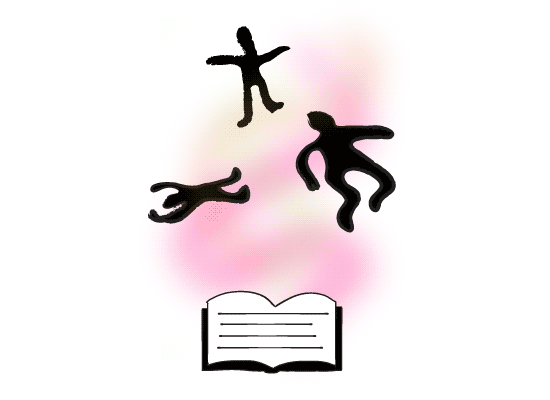I’ve read a bunch of considered reviews of the Kindle 3 (my favourite being Marco Arment’s, because his work on Instapaper means he’s more conscious than most as to how one’s choice of hardware can affect the reading experience). My problem is that most reviews seem to focus in on the physical nitty-gritty – keyboard, screen contrast ratio, refresh rate, weight, and so on – without exploring the real metaphysics of the device. Why does the Kindle exist at all? Is it, as John Gruber suggests, a gadget without a future?
(Just to preface, this isn’t just about the Kindle. I’m using “Kindle” as shorthand to refer to an entire class of dedicated reading devices including the Kobo, the Nook, the Sony Reader, and, well, even the old-school paperback novel. “iPad” is shorthand for a highly-responsive web-connected multimedia device).
Don’t Wanna Be No Stinkin’ iPad
I love the iPad, but the thing’s not revolutionary. It’s a flat panel, high resolution, rapid refresh-rate colour touchscreen, capable of playing movies, running apps, and browsing the web. It’s totally evolutionary. In fact, I’d wager that if you could somehow travel back to 1952 with your iPad in hand, you’d receive compliments for your whiz-bang TV – that’s because the iPad builds on the success of the PC, which built on the success of the lounge-room television. More than that, the iPad is a “more/faster/cooler” gadget – it lets you do more stuff, more quickly (and therefore more simply), and more ostentatiously than you could otherwise. There’s a dominant line of thinking in the tech community that suggests that every product should follow the “more/faster/cooler” model of development. This line of thinking, favouring speed and additionally functionality, comes with certain implications.
Two questions that we rarely seem to ask are, “Is it possible to do something too fast?” and, “Is it possible to have too much choice?” The Paradox of Choice suggests that having a large number of options available to us at any one moment is anxiety-provoking. And, of course, there are a number of tasks for which increased speed becomes a hindrance: the faster you read, for example, the less time you have to digest the words you’ve just ploughed over. In other words, it’s just not true that “more/faster” model is better in every use case.
Less/Slower
The Kindle 3 is a “less/slower” gadget. You can do less on the Kindle than on any conventional modern PC, phone, or tablet, and the slow refresh rate of the Kindle’s e-ink screen makes it a real slog to move from one ebook to another. The fact that the screen does not draw power until the point of refresh encourages the user to linger on each page, and the content displayed is almost always static (unless something’s loading, in which you’re treated to the conventional spinning disk). After a solid half hour reading on the Kindle, you fall into a kind of “flow”: right or left thumb perched on page forward button, with each click signifying, “I want the next bit, now.” (On the iPad, there’s no concept of “next” because anything could be next: within the space of several seconds you could go from reading a page of Dickens to beginning the latest episode of Two and a Half Men).
Amazon seem to recognise that immersive, long-form reading is about more than just glancing over a series of words. Reading a novel is akin to a meditative experience, in which the reader removes themselves from the world and agrees to devote their mental energy over a space of time exclusively to thinking about the particular concepts or situations the writer has expressed in those words. Most books are less immediately gratifying than most films or songs, and that’s because the reader has to fall into a “flow” state before really connecting with a written narrative. When you hit “flow”, you forget you’re reading at all: the feeling is of daydreaming in sync with the writer. It can be tricky to hit flow – if you’re interrupted, or if the story isn’t very good – but as soon as you do, you’re inside the world of the book.
It’s this notion of flow that makes reading on the iPad so tricky. You need time to fall into flow, so it follows that you need a gadget that can encourage you to persevere with a text until you hit that point of connection. The weird truth (and this applies to even the most serious of readers) is that when you aren’t in flow with a text, you’d rather be doing almost anything else. So what prevents you from leaving a text before you hit flow? Some readers sit down with a cup of tea, others will find a cozy spot away from potential distractions. The trick is placing yourself in a situation in which there’s a small barrier to leaving the text before you hit flow. The Kindle provides this barrier: you can’t do much on the Kindle besides read, or shop for reading matter. On the iPad, meanwhile, the barrier to leaving a text before leaving flow is negligible: a single tap on the home button and you’re out.

Comments
One response to “The Physics and Metaphysics of the Kindle”
[…] This post was mentioned on Twitter by goldmag, Connor Tomas O'Brien. Connor Tomas O'Brien said: iPad is more/faster; Kindle is less/slower. It's all about flow. The Physics and Metaphysics of the Kindle: https://connortomas.com/posts/328 […]